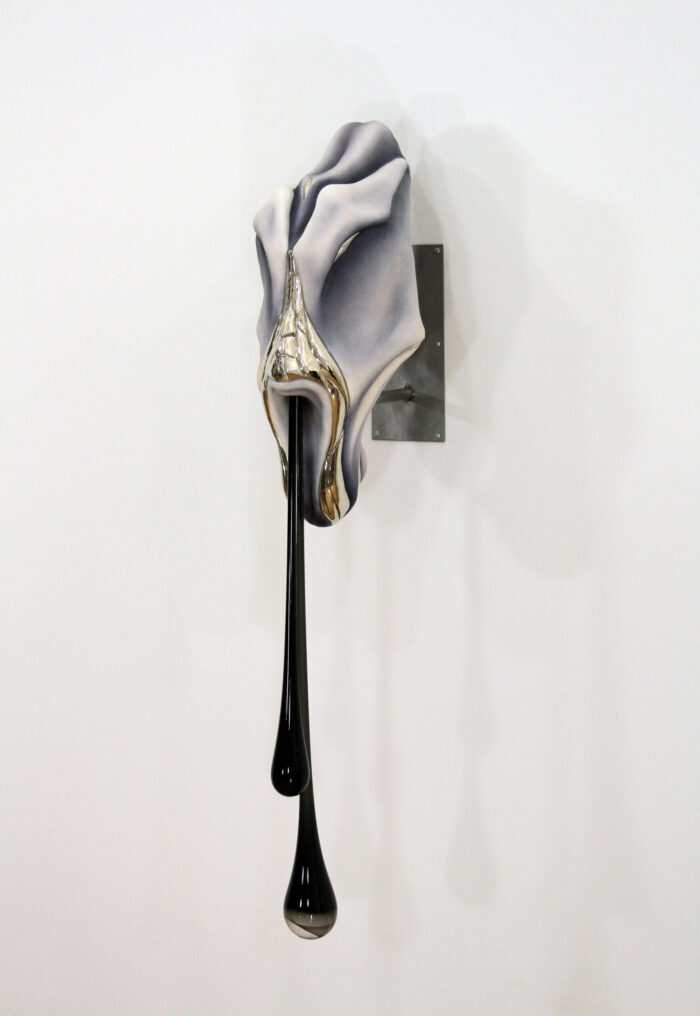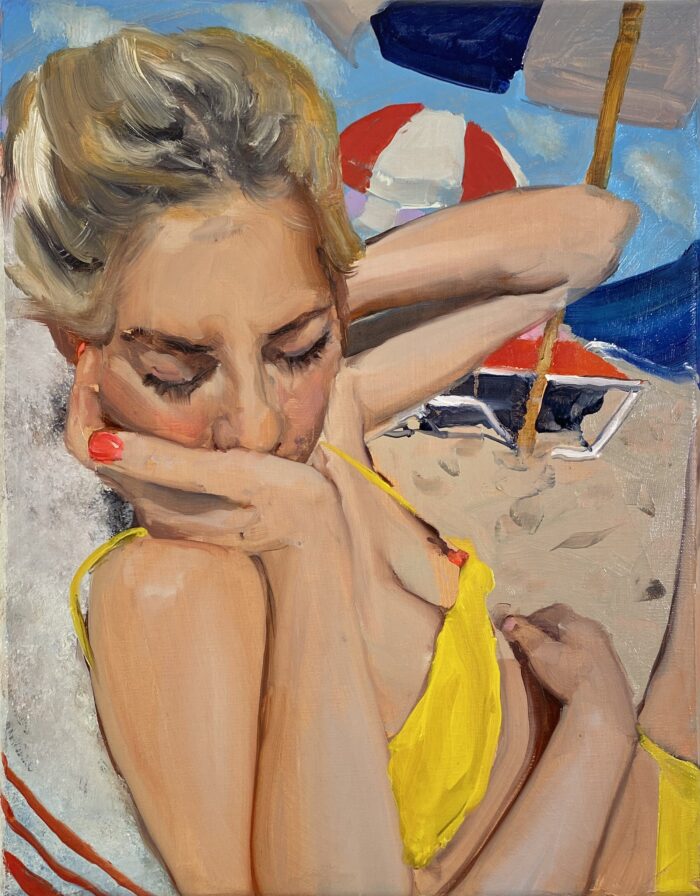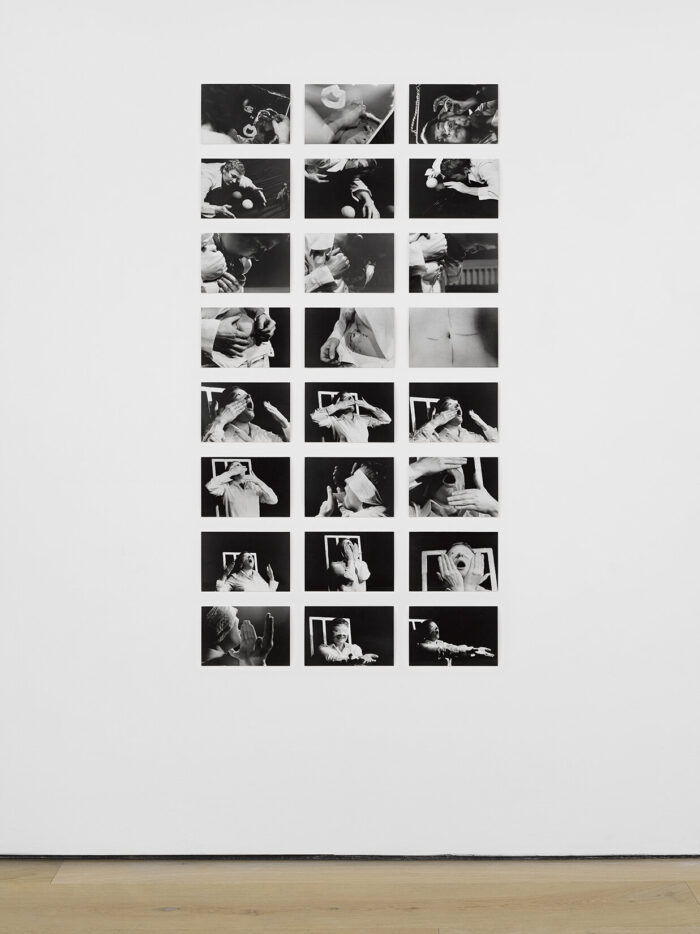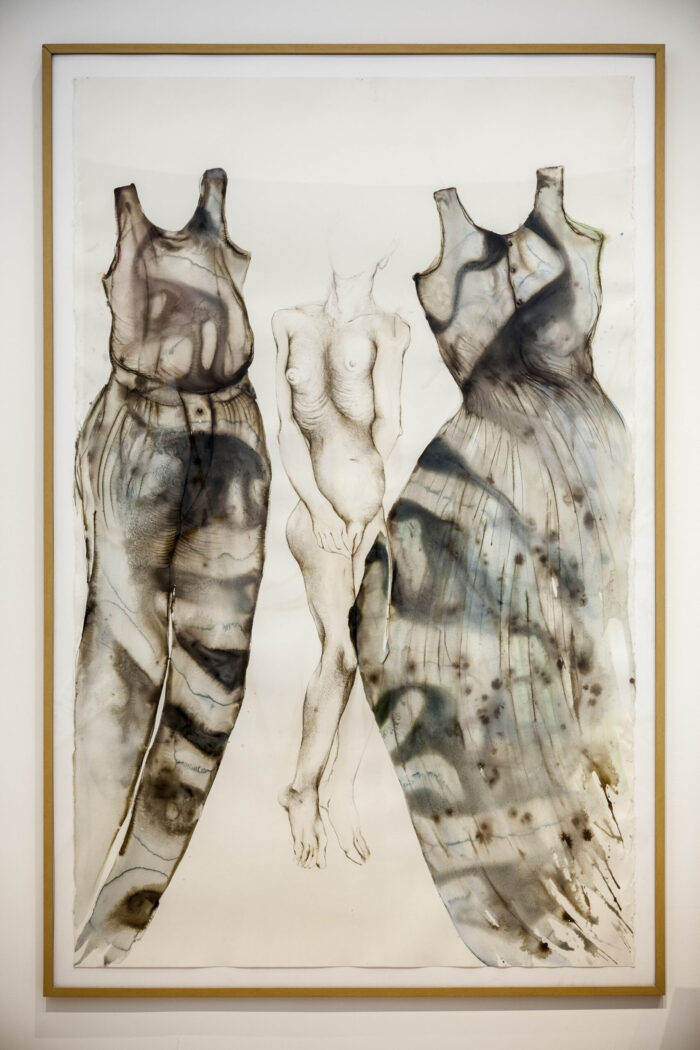









I WANT TO FEEL ALIVE AGAIN at Lyles and King Gallery
21 Catherine St, New York
Sep 2,2020 – October 11, 2020
Rebecca Horn, Gavin Kenyon, Dan Herschlein, Farley Aguilar, Mira Schor, Gina Pane,
Ivana Bašić, Polly Borland, Aaron Gilbert, Rosa Loy, Jenna Gribbon, Rachel Howard,
Jessie Makinson, Ariana Papademetropoulous, Sara Rahbar, Chiffon Thomas, Aleksandra
Waliszewska, Faith Wilding, Sara Anstis, Bhasha Chakrabarti, Elia Alba, Aneta
Grzeszykowska, Ridley Howard, Lise Stoufflet, Phumelele Tshabalala
With the world grown uncertain, it makes sense to refocus on figuration, to take refuge in
the facticity of our bodies (when pricked, we bleed: fact), but in the current situation it is
a roulette wheel: our bodies could betray us and fail at any time. We experience deeply
the dynamic between bodily alienation and bodily intimacy, our skin as the wall
separating and protecting ourselves from others, but also as the point of contact and
exchange—how we are a danger to each other and how we desire each other.
I WANT TO FEEL ALIVE AGAIN, the inaugural exhibition at 21 Catherine Street,
concerns the body, empathy, and human connection, using skin as the central motif. In
“Body Art/Performing the Subject,” Amelia Jones writes that body art solicits the viewer
and draws them “into the work of art as an intersubjective exchange.” This exhibition
argues that figuration in painting, photography, and sculpture can also elicit this exchange through a similar haptic encounter with the body, and its themes seem suddenly more relevant, urgent, and charged.
Emmanuel Levinas famously described the beginning of ethics and empathy as rooted in
the face-to-face encounter. “The face, in its nudity and defenselessness, signifies: ‘Do not
kill me.’” The work in I WANT TO FEEL ALIVE AGAIN moves between revealing the
face of the subjects and evoking their lived presence. Often this is manifested as an
alienated, pained vitality: the hand traces of Rebecca Horn’s “Body Drawings”, the
mythopoetic masochism of Gina Pane, the body-transcending sculpture of Ivana Basic, or
the weighty physicality of Gavin Kenyon’s monumental eyeless concrete bulges. They
contrast with intimate touch and connection in Aaron Gilbert’s drawing of a woman and
child, of Jenna Gribbon depicting a lover’s touch, of Aneta Grzeszykowska’s open lips
collaged to Ana Mendieta’s cheek, and of the debauched riot of nude bodies in Jessie
Makinson’s “Skin Spy.”
I WANT TO FEEL ALIVE AGAIN germinated from reading about the importance of skinto-
skin contact for newborns—new love in a world needing it—and evolved through
readings on “skin hunger.” Kandinsky wrote that “[W]hen the outer supports threaten to
fall, man turns his gaze from externals in on to himself,” but in a precarious world
perhaps much of this internal growth depends on our gaze, if not our touch, focusing on
one another through common need and hunger.
